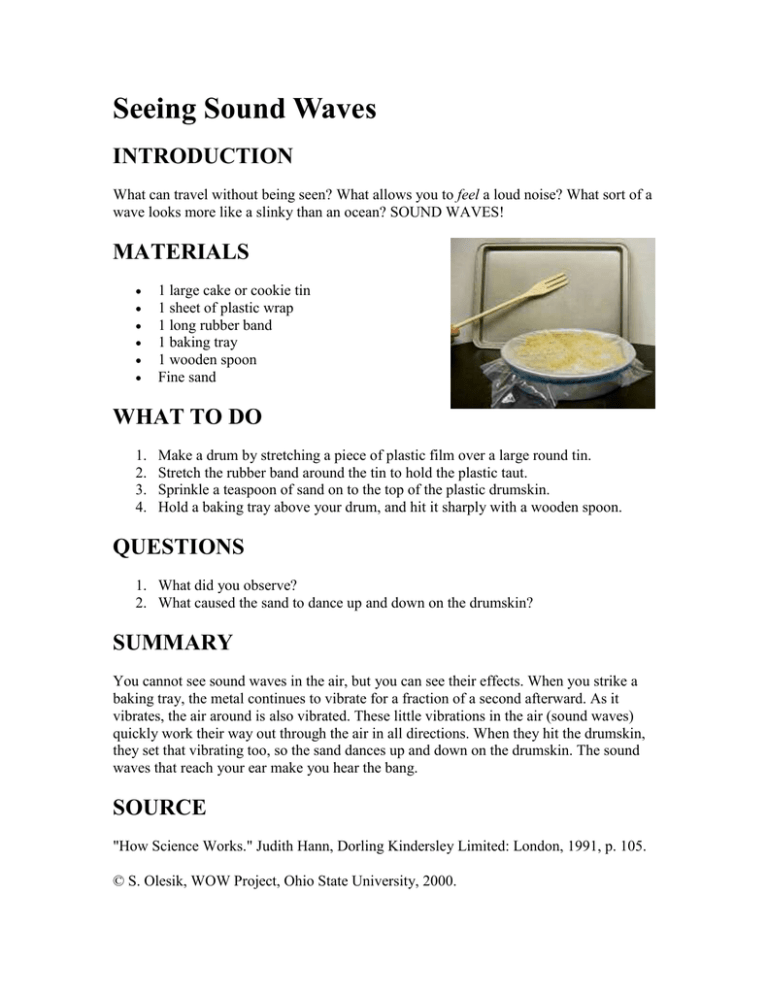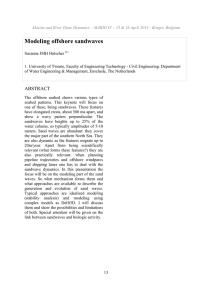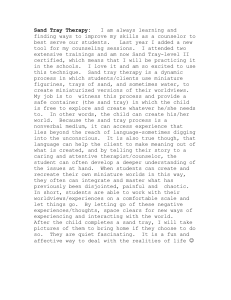Seeing Sound Waves INTRODUCTION MATERIALS
advertisement

Seeing Sound Waves INTRODUCTION What can travel without being seen? What allows you to feel a loud noise? What sort of a wave looks more like a slinky than an ocean? SOUND WAVES! MATERIALS 1 large cake or cookie tin 1 sheet of plastic wrap 1 long rubber band 1 baking tray 1 wooden spoon Fine sand WHAT TO DO 1. 2. 3. 4. Make a drum by stretching a piece of plastic film over a large round tin. Stretch the rubber band around the tin to hold the plastic taut. Sprinkle a teaspoon of sand on to the top of the plastic drumskin. Hold a baking tray above your drum, and hit it sharply with a wooden spoon. QUESTIONS 1. What did you observe? 2. What caused the sand to dance up and down on the drumskin? SUMMARY You cannot see sound waves in the air, but you can see their effects. When you strike a baking tray, the metal continues to vibrate for a fraction of a second afterward. As it vibrates, the air around is also vibrated. These little vibrations in the air (sound waves) quickly work their way out through the air in all directions. When they hit the drumskin, they set that vibrating too, so the sand dances up and down on the drumskin. The sound waves that reach your ear make you hear the bang. SOURCE "How Science Works." Judith Hann, Dorling Kindersley Limited: London, 1991, p. 105. © S. Olesik, WOW Project, Ohio State University, 2000. Print Version Sound Experiments Main Experiments Page Home




